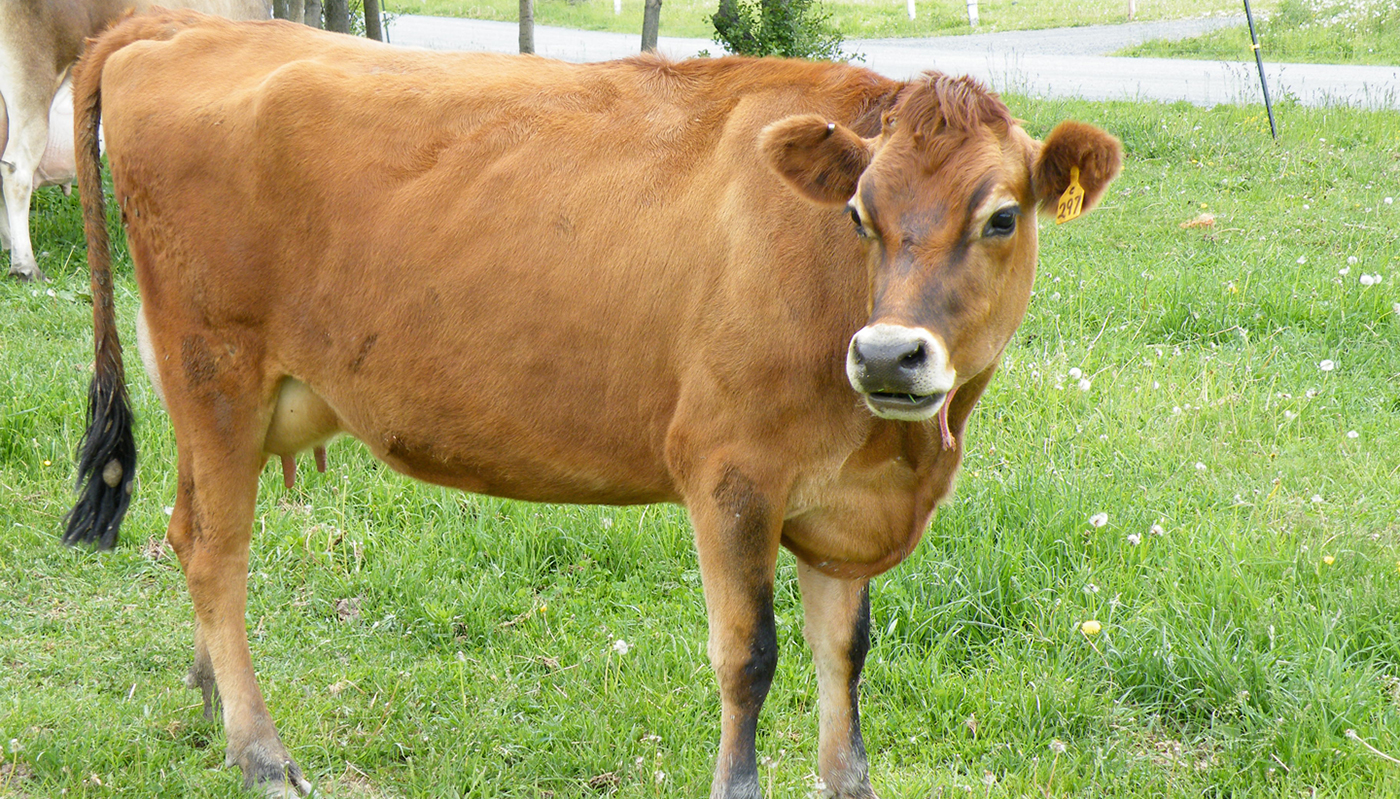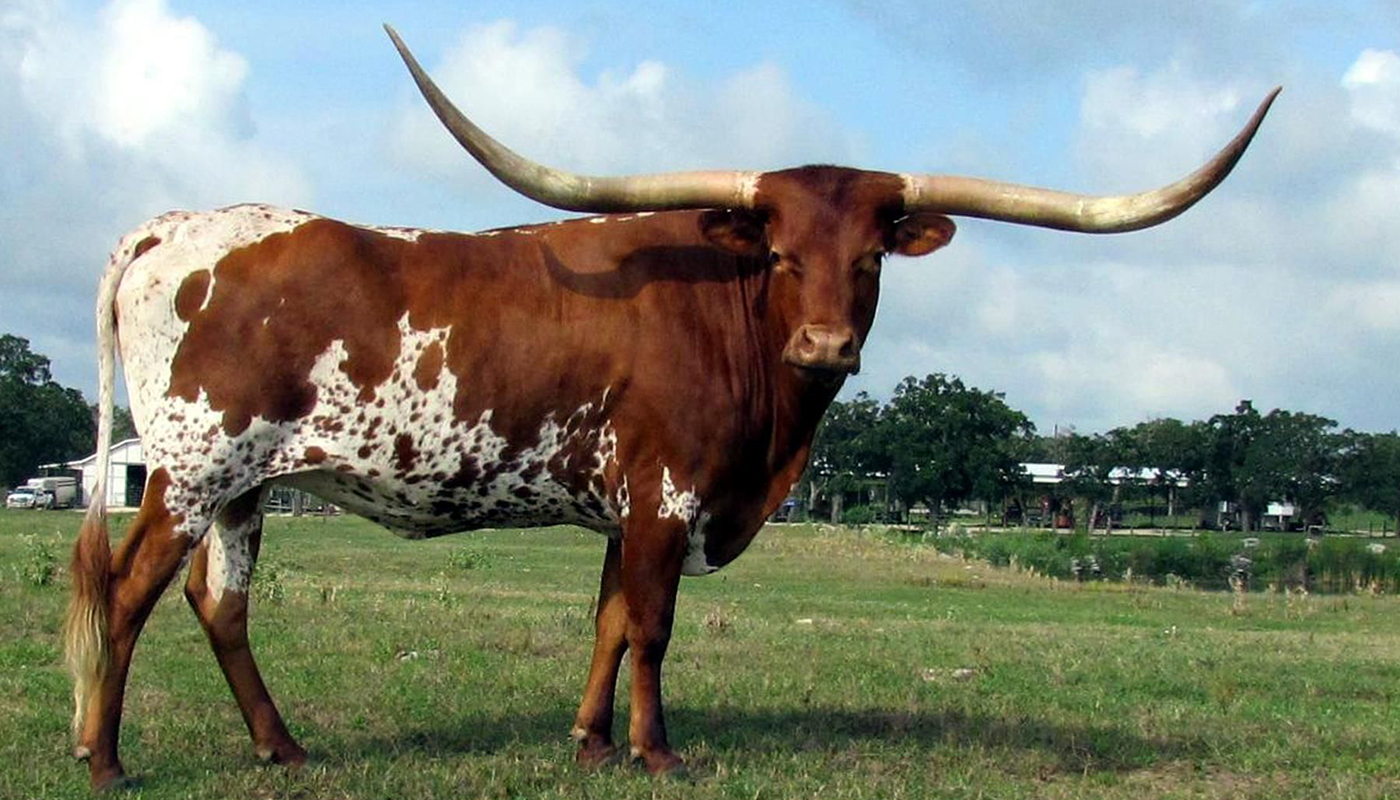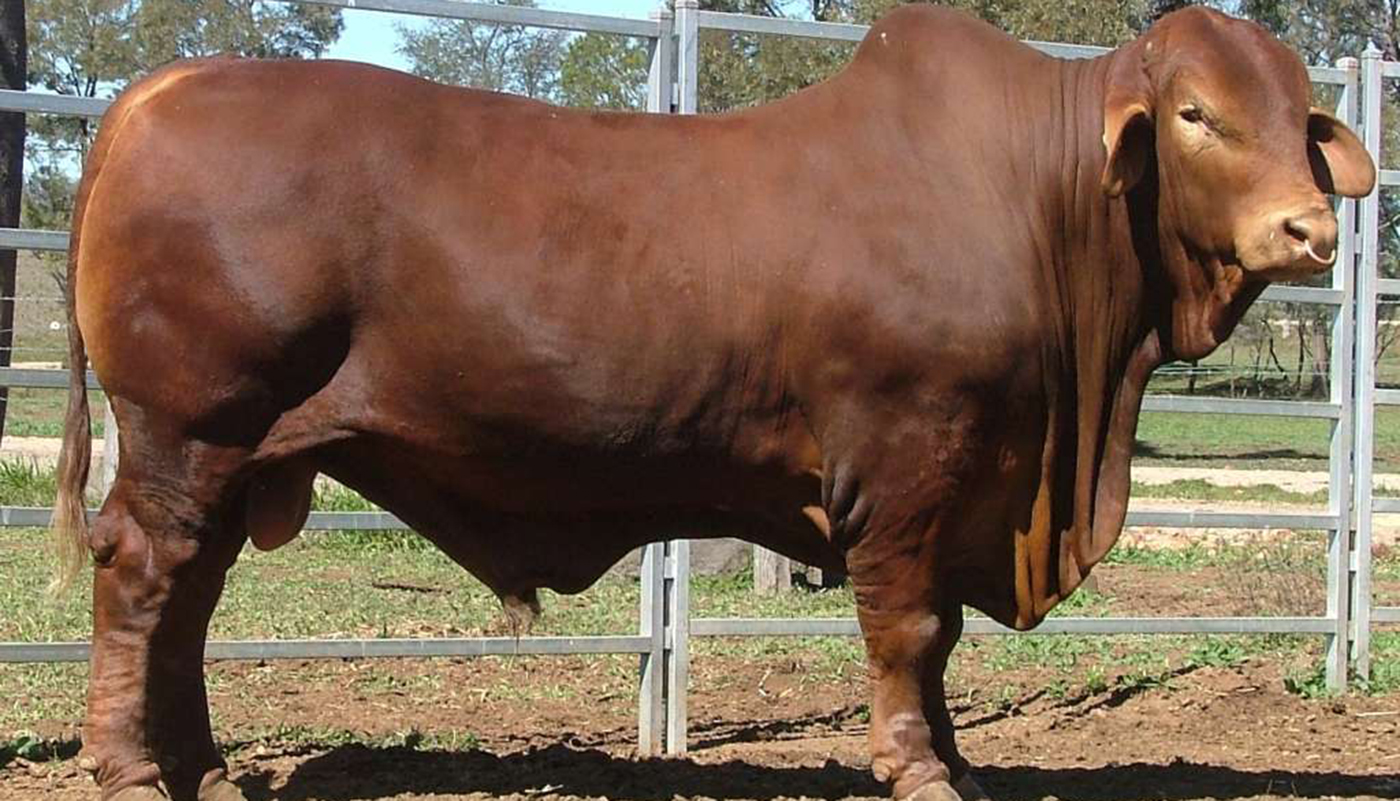
The Gelbvieh is a medium to large sized cattle with a quiet calm and even temperament. They are easy to handle and even easier to manage as they are excellent foragers and enjoy grazing out on the range. They are a good tri-factor purpose breed giving milk and meat and were used as a draft animal to pull wagons, carts, and plows. These beautiful cattle are a good choice for any farmer looking for a family cow or a herd for their farm.
GELBVIEH BREED OF CATTLE QUICK PROFILE OVERVIEW
|
|
|---|---|
| Golden rich red or black in color they are good dual-purpose breed to have around the farm with their quiet and docile nature that they tend to pass off onto their offspring. | |
| Country of Origin: | Germany |
| Other Names: | German Yellow |
| Main Purpose: | Milk, meat, and draft |
| You may Also Like: | 35 Best Cattle Breeds for Milk – Dairy Cattle |
| You may Also Like: | 47 Best Cattle Breeds for Meat – Beef Cattle |
| Can be used for | Breed, Meat, Milk, Draft |
| Ideal Climate: | Heat, Cold, Most Climates |
| Conservation Status: |
Not listed by the *ALC Status/Rarity: Not at risk |
| Health Issues? | No known health issues |
| Good Starter Cattle? | Novice to intermediate Cattle farmer/keeper level |
| Cattle Associations: | The British Gelbvieh Cattle Society, American Gelbvieh Association, Canadian Gelbvieh Cattle Association, Australian Gelbvieh Association, New Zealand Gelbvieh Association and South African Gelbvieh Association |
| Cattle Clubs: | Please refer to The British Gelbvieh Cattle Society, American Gelbvieh Association, Canadian Gelbvieh Cattle Association, Australian Gelbvieh Association, New Zealand Gelbvieh Association and South African Gelbvieh Association for more information on the Gelbvieh cattle breed |
| Where to buy them? | >Please refer to The British Gelbvieh Cattle Society, American Gelbvieh Association, Canadian Gelbvieh Cattle Association, Australian Gelbvieh Association, New Zealand Gelbvieh Association and South African Gelbvieh Association for more information on the Gelbvieh cattle breed |
| Child Friendly? | Livestock should not be left unattended around unsupervised children |
| General Information: | The world Gelbvieh translates into “Yellow cattle” as the cattle’s coat was originally a pure golden brown or honey color. Today their coats can be yellow, reddish or black. Once they were used as a triple purpose breed as draft cattle for pulling wagons, carts, and plows. They were prized for their meat and milk but today they are primarily used in beef production. They are quite a large breed with bull being known to weigh up to 1 ton in weight and cows as heavy as 750 kgs. They have a strong skin pigmentation with helps keep them safe from sun damage. As they have quite thick coats, they are somewhat parasite resistant to that of parasites such as ticks. They have a unique system in which if bitten by a tick blood flow is restricted to that area and the tick dies off due to lack of blood for feeding. Their bloodlines are kept quite pure as only animals must be mostly as in 88% or higher Gelbvieh blood to be registered as a Gelbvieh. Any less percentage have to be labeled as “percentage Gelbvieh”. The Gelbvieh cow has the earliest puberty as compared to most other breeds and second only to the early puberty of the Jersey cow. |
| Note: *ALC stands for American Livestock Conservancy | |
PHYSICAL CHARACTERISTICS |
||||||||||||||||||||||||||||||||
|---|---|---|---|---|---|---|---|---|---|---|---|---|---|---|---|---|---|---|---|---|---|---|---|---|---|---|---|---|---|---|---|---|
| Gelvieh cows have the typical cow blockish physique but have more defined body muscle than most other cow breeds and well-defined udders which are protected by their skin pigmentation which limits sun burn damage to them. They have relatively short to medium length legs in comparison to their bodies and a small heart shaped face with a straight profile. The bulls have similar characteristics to the females but are stockier and muscular and their head a little rounder than the females. Both the males and females have a small tight and sometimes no dewlap. | ||||||||||||||||||||||||||||||||
| Size: | Medium to large | |||||||||||||||||||||||||||||||
|
||||||||||||||||||||||||||||||||
COW BREEDING & MILKING INFORMATION |
|
|---|---|
| Most Cattle produce milk but not all of them are used in the dairy Cattle capacity for their milk. Cows only calve once a year and should have 12 to 14-month inter-calving cycle. They are excellent mothers with great maternal instincts and will protect their young with vigor. They are fertile, long-lived and can calve up into their late teens. | |
| Breeding Period/cycle: | Usually lasts 6 to 24 hours Most ave. 12 to 16 hours Cows usually come on heat every 21 days. |
| Estrous cycle: | Ave. 17 days to 24 days Heifer – usually ave. 20 days Cows – usually ave. 21 days |
| Gestation Period: | Usually, around 279 to 287 days but most gestation is 283 days. Cows that are carrying bull calf’s their gestation period is usually a little longer than cows that are carrying heifer calves. |
| No. Calves/Litter: | 1 calf at a time. Cows rarely have twins or triplets, but it can happen |
| Lactation Period: | Cows lactation period can last for up to about 10 months (305) days. |
| Milking From: | 1 to 6 weeks after Calving |
| Drying off Period: | The cow should have a 12 to 14-month inter-calving cycle. Drying off period for around 60 days before she can calve again. |
| Milk Quality: | Good, Quantity: 9525 kgs per Lactation |
| Milk Ideal for: | Calves, cheese, drinking, ice-cream, and other dairy products |
| You may Also Like: | 35 Best Cattle Breeds for Milk – Dairy Cattle |
CATTLE MEAT PRODUCTION INFORMATION |
||||||||
|---|---|---|---|---|---|---|---|---|
| Gelbvieh has really good meat quality and they are relatively fast growers. They can produce champion carcasses, especially when crossed with other British breeds. They have the largest ribeye-muscle area per 100 kg than any other cattle breed giving higher cutout yields. They have a lean meat and their yearlings are potentially a good source of high-quality tender and lean young beef. | ||||||||
| Meat Production? | N/A | |||||||
|
||||||||
| You may Also Like: | 47 Best Cattle Breeds for Meat – Beef Cattle | |||||||
CATTLE SKIN PRODUCTION INFORMATION |
||||||||
|---|---|---|---|---|---|---|---|---|
| Most meat Cattle will have a skin by-product, and these are usually used in some form or just as a hide. They have not been specifically bred for their hides, but their solid girth and excellent hide quality make leather a good by-product for leather goods from this breed. | ||||||||
| Skin Production? | No, Quality: Good | |||||||
| Skin is used to Produce: | Calf/cow skin leather products such as shoes, car seats, fine leather coats, gloves, handbags, belts, furniture, rugs, etc. | |||||||
|
||||||||
HISTORY
The Gelbvieh is one of the oldest breeds of German Cattle and was first found in three Francionian districts of Bavaria. Systematic stud breeding work to improve the breed started in 1850 and through pure breeding, they developed the “red-yellow” Franconian cattle. These cattle were developed from various strains of such as the Celtic-German Landrace and the Heil-Brown Landrace cattle amongst a few others.
The Gelbvieh became a popular draft animal in the 1800s as well as a slaughter animal.
There have a been a few associations founded around the breed with The Breed Society for Yellow Franciani Cattle for Middle and Upper Franconia Cattle in Nurnberg founded in 1897. In 1899 The Breed Society for Gelbvieh was founded in Lower Franconia and based in Wurzburg.
In the 1960s Red Danish cattle were included in the breeds herd book this was in an effort to improve the breeds milk production. In 1969 Leness Hall, the director of International Marketing for Carnation Genetics saw the Gelbvieh cattle for the first time. It was he who worked towards getting the Gelbvieh semen to the United States of America. He was finally able to bring in 43000 units to the United States in 1971 which was the same year the American Gelbvieh Association was begun.
Video
USEFUL LINKS
- Purebred Dairy Cattle Association
- American Dairy Association
- National Association of Animal Breeders
- American Dairy Science Association
- United States Cattlemen’s Association
- National Cattlemen’s Beef Association
- American National Cattlewomen
- Beef Cattle Breed Associations
- National Cattlemen’s Beef Association
- Fur Commission USA
- North American Meat Institute
- American Livestock Conservancy
- Animal Shelter (ASPCA)
- American Veterinary Medical Association
- American Animal Welfare Society
- American Animal Control
- American Society of Animal Science
- United States Department of Agriculture
 Kangayam Cattle Breed – Everything You Need to Know
Kangayam Cattle Breed – Everything You Need to Know Jersey Cattle Breed – Everything You Need to Know
Jersey Cattle Breed – Everything You Need to Know Corriente Cattle Breed – Everything You Need to Know
Corriente Cattle Breed – Everything You Need to Know Texas Longhorn Cattle Breed – Everything You Need to Know
Texas Longhorn Cattle Breed – Everything You Need to Know Droughtmaster Cattle Breed – Everything You Need to Know
Droughtmaster Cattle Breed – Everything You Need to Know Heck Cattle Breed – Everything You Need to Know
Heck Cattle Breed – Everything You Need to Know Boran Cattle Breed – Everything You Need to Know
Boran Cattle Breed – Everything You Need to Know Ankole-Watusi Cattle Breed – Everything You Need to Know
Ankole-Watusi Cattle Breed – Everything You Need to Know Brown Swiss Cattle Breed – Everything You Need to Know
Brown Swiss Cattle Breed – Everything You Need to Know Blonde d’Aquitaine Cattle Breed – Everything You Need to Know
Blonde d’Aquitaine Cattle Breed – Everything You Need to Know Wagyu Cattle Breed – Everything You Need to Know
Wagyu Cattle Breed – Everything You Need to Know Ayrshire Cattle Breed – Everything You Need to Know
Ayrshire Cattle Breed – Everything You Need to Know